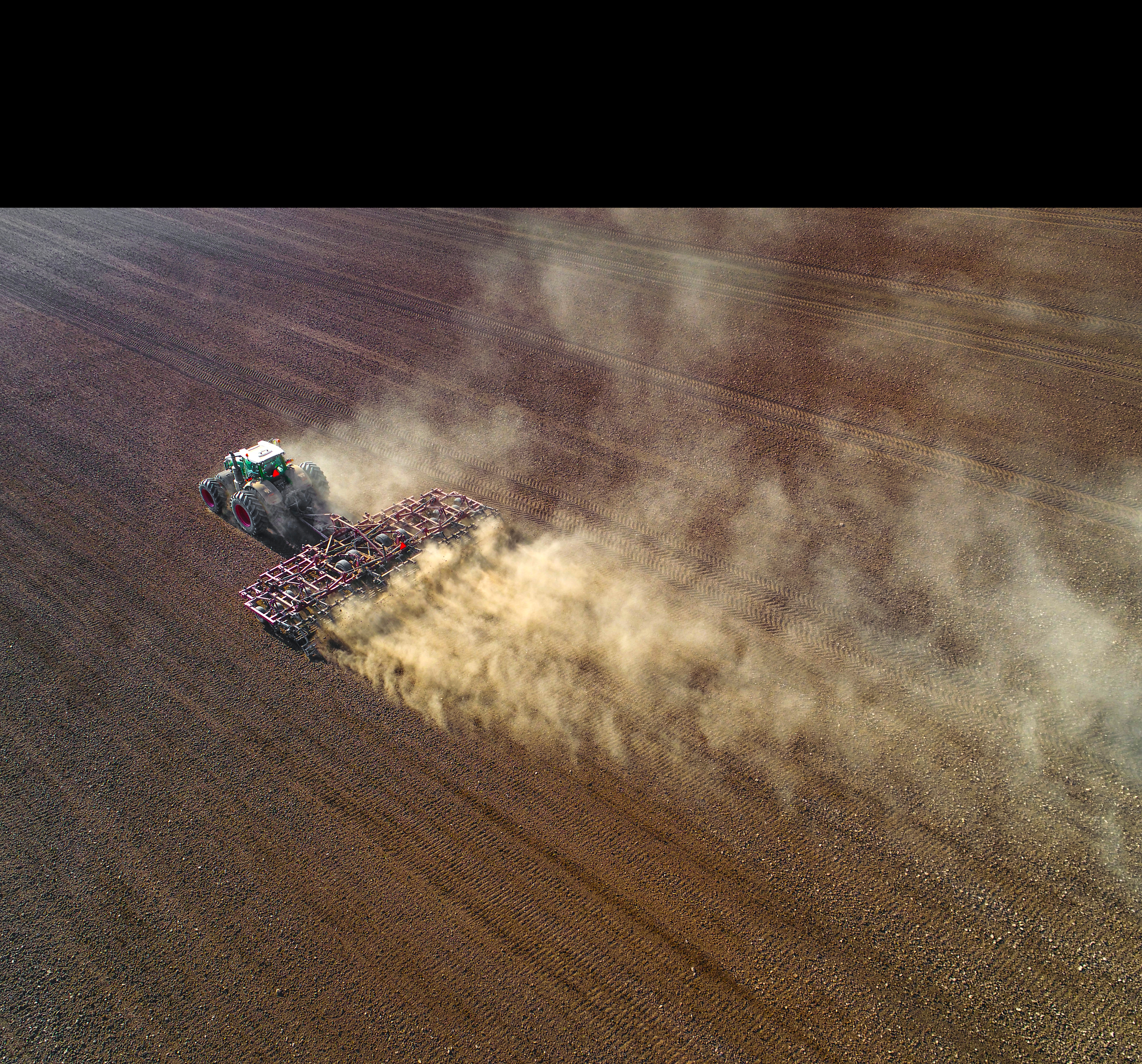
In ridge plant, crops are planted into ridges formed during cultivation of the previous crop. A band application of herbicide behind the planter provides weed control in the row. Crop cultivation controls weeds between the rows and rebuilds the ridges for the following year.
Ridge planting reduces erosion by leaving the soil covered with residue until planting. After planting, 30% to 50% residue may be left, but it is not uniformly distributed. Residue-covered areas between the rows alternate with residue-free strips in the row area. For erosion control, NRCS specifies that ridges must be 3 to 5 inches higher than the furrows after planting and that ridges be shaped to shed water to the furrow. For the most effective erosion control, orient ridges approximately on the contour.
Crop rotation influences the suitability of ridge systems. Ridges are maintained year-to-year with a cultivator, making ridge plant well suited to continuous row crops. Two cultivations are generally required: the first loosens soil and controls weeds, the second provides additional weed control and rebuilds the ridges. For ease of planting, the ridges should be rounded or flat topped and 6 to 8 inches tall after cultivation. Proper ridge shape and annual maintenance are keys to a successful ridge system. Be careful not to damage or destroy the ridges by wheel traffic, particularly during harvest.
Level or gently sloping fields, especially those with poorly drained soils, are well suited to ridge systems. The elevated ridges warm earlier in the spring. This warming, combined with drainage from the ridge, allows soil in the ridge to be drier at planting than untilled, unridged soil. A ridge system is an excellent choice for soils that are often too wet for early spring tillage, especially in the northern Corn Belt where the growing season is shorter.
Ridge systems complement furrow irrigation. Ditching, furrowing, or hilling for irrigation provides suitable ridges for planting the following year. Chopping stalks or performing a very shallow, high speed tillage operation removes residue from the ridges and aids furrow irrigation, especially on soils with higher infiltration rates.
In ridge plant, row cleaning devices on the planter move a small amount of soil, residue, and weed seed off the ridge top. Ridge-cleaning attachments include sweeps, disk furrowers, or horizontal disks. Except for possible fertilizer injection, no soil disturbance occurs prior to ridge planting.
Ridge-till
In contrast, some ridge-till systems use limited tillage prior to planting. Tillage is generally very shallow, disturbing only the ridge tops. This tillage smooths peak-shaped ridges to help keep the planter on the old rows. Depending on the tillage implement used, some control of emerged weeds and/or incorporation of herbicide in the row area is possible. However, tillage also incorporates some weed seed, rather than removing it from the row.
One modified ridge-till system uses a rotary tiller with planting units mounted behind it. To maintain the old ridge and avoid excessive power requirements, operate the rotary tiller only in the top 2 to 3 inches of the ridge. Limit rotor tines to the row area to provide a strip till configuration.
Other ridge-till systems use mulch treaders, rolling stalk choppers, or flexible harrows. Major reasons for using one of these implements include:
- Rounding or flattening the ridge.
- Removing some of the residue from the ridge.
- Killing emerged weeds.
Regardless of the tillage implement used, keep operating depth very shallow. Plant stubble in the old row should remain visible. Chemical incorporation is not a goal.

